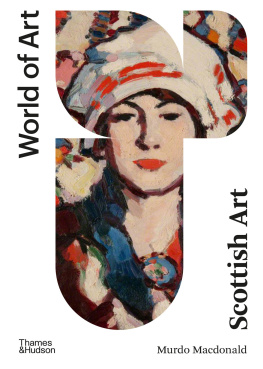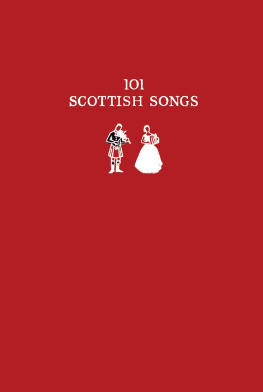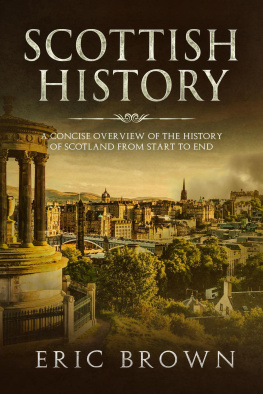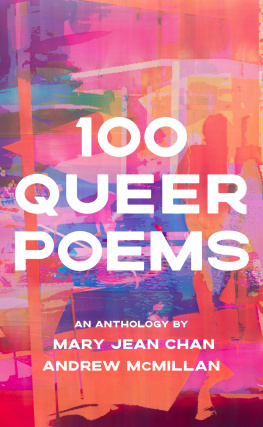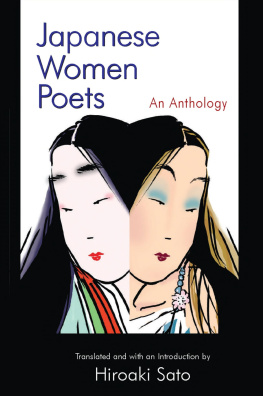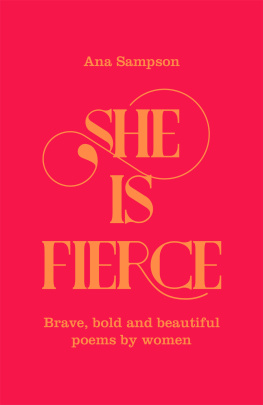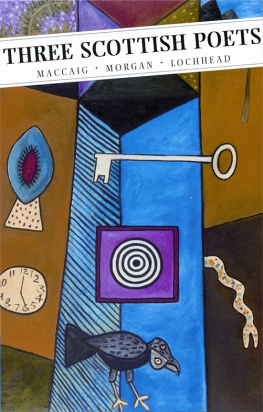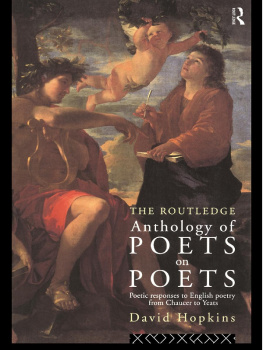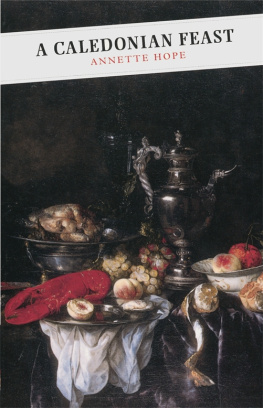I want to thank the staff of the Scottish Poetry Library and particularly the librarian, Lizzie MacGregor, for assistance in finding details about the poets. The librarians of Level 5 of the Mitchell Library, Glasgow, have been most helpful in repeatedly supplying me with material from the Scottish Poetry Collection; this is a wonderful resource without which I could not have put the anthology together. Karen McCrossan of Canongate has been a most patient, efficient and supportive editor. Dorothy McMillan Taing mhr do na bird a thug comhairle dhomh air eadar- theangachadh nan dn, agus do na daoine a leanas airson an cuideachaidh: John Boa, Raghnall MacIlleDhuibh, Fr Donald Mackay, Marion Morrison agus Joina NicDhmhnaill. Michel Byrne
Poetry was my first love in writing is still my true love, even though I write few poems. But the writing of a poem is a pure delight, finished, complete, absolute, an experience.
Marion Lochhead, Notebook I have taken Marion Lochheads testimony to poetry as my epigraph, as an assurance to the reader that although it might seem tendentious to anthologise writing according to gender and place, I have throughout been conscious of the primacy of delight. Above all this anthology seeks to celebrate the making of poetry, and the dedication to making, of all the writers included in it. Nevertheless, it would be disingenuous to pretend that there is nothing problematic in the production of an anthology of modern Scottish womens poetry. Arguments about the propriety of such anthologies, depending, as they do, on possibly dodgy classifications, and invoking, as they must, debates about gender and place, have been well rehearsed over the last thirty years, which have seen a number of national anthologies and an even larger number of anthologies of womens poetry, although Catherine Kerrigans pioneering Scottish Women Poets remains the only anthology that covers both categories for Scotland. the same foci. Is this a proper or useful way to think about poetry? Do the notions of gender and nation or place liberate or constrain discussion? Are readers assisted or bullied by such groupings? The advantages of greater exposure for the writers generated by a variety of ways of conceiving their work must always be balanced against the dangers of ghettoisation and of the production of totalising figures for language, style, belief and concern that may well blur what is special in individual writers, or what these writers have in common with figures who could never be anthologised with them according to the principles of sex or nation.
Yet the persistence of such anthologies and essay collections suggests that interest in womens writing as a phenomenon different from writing by men remains at the forefront of academic concerns and continues to provoke the curiosity of the reading public. Equally, notions of nation and place refuse to go away, even when they are most fervently wished into oblivion. Of course, more collections of essays from academic publishers may seem to prove little more than that academics must write and hence find things to write about. But the involvement of the writers themselves in a number of such collections and anthologies somewhat validates the enterprises. Writers as well as academics contributed to Sleeping with Monsters, PeripheralVisions, A History of Scottish Womens Writing, Gendering theNation, Kicking Daffodils and Contemporary Womens Poetry.
WOMEN AND SCOTTISHNESS
The focus on women probably requires more justification than the focus on place.
Place, as can easily be seen from the poetry in this collection, does seem to be, as Robert a pressing concern of modern poets indeed, it can probably be shown to have exercised the imagination of most poets at all times. But the separation of womens writing from mens in anthologies has worried a number of poets of both sexes. Although I have begun by conceding the problem, I do not believe that this separation need be characterised as ghettoisation. In the Introduction to A History of ScottishWomens Writing Douglas Gifford and I said that even if the only justification that can be offered for separatism is that it carves out more space to talk about womens writing, then that seems good enough to be going on with (p.ix); but I now feel that this is over-apologetic. I think rather that we should be even more pragmatic: all the evidence suggests that the focus on womens writing over the last thirty-odd years has made a significant difference to the profile of women writers. we better get a woman? that was still a feature of some literary gatherings in the 1980s has, I think, completely disappeared, or at least it is a long time since I heard it. we better get a woman? that was still a feature of some literary gatherings in the 1980s has, I think, completely disappeared, or at least it is a long time since I heard it.
This does not, however, mean that it is time to stop; rather, this success should be built on. Nor do I think that the shift in focus in gender studies to more varied and variable gender positions means that we have ceased to know what we mean when we talk about men and women, and it is the poetry of women that this volume is intended to celebrate, whether or not there is any consensus about the difference in kind of this poetry from poetry written by men. What then of Scottishness? If we extend the idea of the nation into the wider idea of place, and the situation moral, emotional and linguistic of the writer within place, we need perhaps look no further for justification of the Scottish side of this project. In Identifying Poets Robert Crawford convincingly argues that the theme of home, crucial for the identifying poet, is one of the great themes, perhaps the major theme of late twentieth-century poetry in the English-speaking world using that last, problematic term only to fracture and problematize it by paying close attention to the world of poets who write in Scots (p.15). Language and place are, of course, intimately bound together. Not all the writers in the volume will be felt to be equally Scottish but some relationship with Scotland and Scottishness, and the unique situation of the writer with respect to these ideas, will be found in most of the poems.
My interpretation of Scottishness has been, however, as wide as possible. It agrees with Alasdair Grays definition of anyone working and living in Scotland but it also includes those who have in the past lived or worked in Scotland and who have either thought about this at the time or subsequently. Thus, Carol Ann Duffy, who left when she was fact, is appropriated. It is to be assumed that she is gracious about the co-option since she accepted a commission for a poem to celebrate the opening of the Museum of Scotland on 30 November 1998. Kathleen Raine, who has an even more complicated emotional relationship with Scotland, is welcomed, as is Kate Clanchy, who spent her childhood and adolescence in Glasgow and Edinburgh. Kate Clanchy confirms Robert Crawfords sense of wheres home? as an important question for twentieth-century writers: Samarkand is primarily about home a sense of the right place in space and time.
And Marion Lomax, although less technically Scottish than Clanchy, nevertheless so engages with border crossings and with Lady Macbeth that I was anxious for her presence.
WOMEN AND TRADITION
If one then allows women and Scottishness, what is to be done with them? What questions may we ask of the poetry? Do women/should women address a different subject matter from men? Do women/should women have a different language/languages from men? These are issues for all genres but they are peculiarly intense for poetry. If women have problems with a predominantly male tradition, are these problems always already in place, even when the social and political situation of women changes? Have some of the problems that women have with poetry been created, sometimes retrospectively, by feminist criticism? In the course of a conference in Glasgow on Scottish womens writing in 1986 a number of these issues emerged: various academics Glenda Norquay, Isobel Murray, myself almost assumed that women had special problems with a male aesthetic, especially in poetry, given what still seemed the overwhelming masculinity of the Scottish poetic tradition. Liz Lochhead, who also spoke, felt that women poets must have a different relationship with the Muse. But Janet Caird, an older poet in the audience, although one who started writing poetry late in life, could not understand what people were going on about: You are a woman; you write poetry. Whats the problem? she asked.



